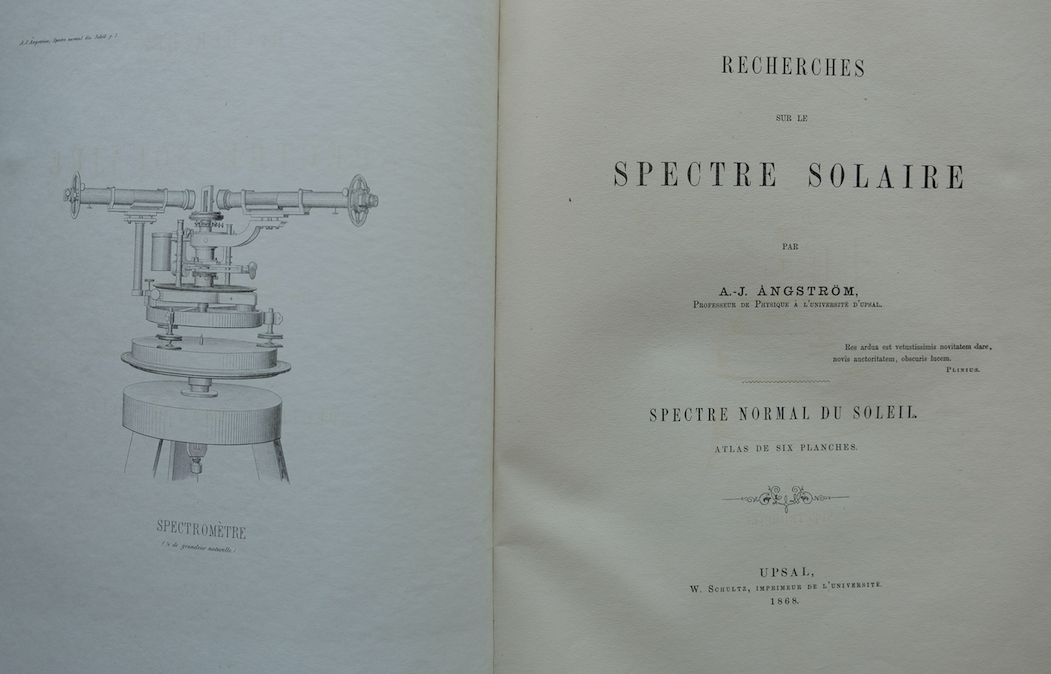
Anders Jonas Ångström was a Swedish physicist best known for his studies of astrophysics, aurora borealis, heat transfer, and terrestrial magnetism. Ångström’s many findings within these areas continue to play an important role in modern-day science. His contributions to physics earned him the Rumford Medal as well as several other honors in his name, including the angstrom unit and a crater on the moon! Let’s learn more about this physicist whose work and accolades extend beyond Earth.
The Upbringing of Anders Jonas Ångström
On August 13, 1814, Anders Jonas Ångström was born in Lögdö, Sweden, to Johan Jöns Ångström and Anna Katarina Thunberg. He received his early education in Härnösand and later ventured to Uppsala to pursue a higher education at Uppsala University, where he earned his doctorate in physics in 1839.
Ångström also spent time at the Stockholm Observatory in 1842 in an effort to gain more hands-on experience in the field of astronomy. A year later, he was appointed as the keeper of the Uppsala Astronomical Observatory.

Portrait of Anders Jonas Ångström. This work is in the public domain in its country of origin and other countries and areas where the copyright term is the author’s life plus 70 years or less, via Wikimedia Commons.
Discovering Spectroscopy and Airglow
In 1853, Ångström became a pioneer of spectroscopy, a field of study that measures the electromagnetic spectrum that results from the interaction between electromagnetic radiation and matter. Spectroscopy sheds light on how celestial objects like a black hole, a neutron star, or an active galaxy produce light and move. It can even reveal the elemental makeup of such objects.
The angstrom unit (Å), named after Ångström, is used in spectroscopy for measuring extremely small distances: 1 Å is equal to 10−10 m. It is useful for measuring wavelengths of light and interatomic spacings in condensed matter.

Front pages of the “Recherches sur le spectre solaire” by Anders J. Ångström. This work is in the public domain in the United States because it was published (or registered with the U.S. Copyright Office) before January 1, 1928, via Wikimedia Commons.
Along with his work in the field of spectroscopy, Ångström is also remembered for identifying airglow, a faint emission of light by a planetary atmosphere. In Earth’s case, airglow occurs high in its atmosphere and causes its night sky to never go fully dark. Since Ångström’s identification of airglow in 1868, lab tests have shown that photon emission resulting from different processes including chemical reactions contribute to the visual effect. The year prior to Ångström’s finding of airglow, he was the first to examine the spectrum of the aurora borealis and detect the bright line of oxygen in its yellow-green region.

The glowing aurora seen from the International Space Station in 2011. This file is in the public domain in the United States because it was solely created by NASA. NASA copyright policy states that “NASA material is not protected by copyright unless noted.”
Ångström’s Legacy
Ångström’s discoveries and accomplishments did not go unnoticed. He was awarded the Rumford Medal of Royal Society in 1872. In addition, he was selected to be a member of various learned societies throughout his life, including the Royal Swedish Academy of Sciences, the Royal Society, and the Institut de France. There is also a crater on the moon named Ångström in his honor.
He passed away in Uppsala on June 21, 1874, leaving behind his many contributions as his legacy. Uppsala University pays tribute to him and his son — Knut Ångström, who followed in his father’s footsteps and also became a physicist, later teaching at Uppsala University — with a laboratory named in their honor, the Ångström Laboratory. This laboratory is a hub of several of the university’s departments, including physics, astronomy, mathematics, engineering sciences, and chemistry, as well as the Institute of Space Physics and various research centers. In 2017, the university decided to further expand the Ångström Laboratory with its New Ångström project, the largest construction project in the university’s history. This project included the addition of two buildings, which provide more room for student spaces and learning environments.

The Ångström Laboratory. Image licensed under CC BY-SA 4.0, via Wikimedia Commons.
Let’s honor Anders Jonas Ångström and his developments within physics and wish him a happy birthday!
Further Reading
- Learn more about Anders Jonas Ångström here:
- Read about the lives and legacies of other scientists who made contributions to physics:
- Charles-Augustin de Coulomb, a French engineer, perhaps best known through Coulomb’s law
- Ludwig Boltzmann, an Austrian physicist who pioneered statistical mechanics
- Robert Ledley, a scientist who helped shape the use of technology and physics in the medical field



Comments (0)